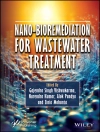The landmass on which we live is an integral part of our water catchment. Any human – tivity will inevitably have some consequences on the availability and composition of fresh waters. These consequences are becoming increasingly important and detectable as the – man population grows. The problem is to be addressed at the global scale, as frequently, decisions made have inter-regional and international impacts, and must therefore be coor- nated. In a number of European Member States, for example, the availability of water – sources depends on the activities of other upstream countries. The demand for fresh water in Europe, as well as in the world, is increasing. There is an upward pressure on European water demand for public supplies (drinking water, recreation, etc. ), for industry, and for – rigated agriculture. The ecological impacts of different uses are complex, and currently not always predictable. This book should help planners in their decisions on different water management options for human use. Water, of course, is not only relevant as a resource, exploited for human activities, but it is also relevant to aquatic ecosystems and to their quality. Preservation and restoration of the ecological quality of these ecosystems have a major social impact, as it has been stressed in several European Community actions.
Tabla de materias
Fish community assemblages.- Patterning riverine fish assemblages using an unsupervised neural network.- Predicting fish assemblages in France and evaluating the influence of their environmental variables.- Fish diversity conservation and river restoration in southwest France: a review.- Modelling of freshwater fish and macro-crustacean assemblages for biological assessment in New Zealand.- A Comparison of various fitting techniques for predicting fish yield in Ubolratana reservoir (Thailand) from a time series data.- Patterning spatial variations in fish assemblage structures and diversity in the Pilica River system.- Optimisation of artificial neural networks for predicting fish assemblages in rivers.- General introduction.- Macroinvertebrate community assemblages.- Sensitivity and robustness of a stream model based on artificial neural networks for the simulation of different management scenarios.- A neural network approach to the prediction of benthic macroinvertebrate fauna composition in rivers.- Predicting Dutch macroinvertebrate species richness and functional feeding groups using five modelling techniques.- Comparison of clustering and ordination methods implemented to the full and partial data of benthic macroinvertebrate communities in streams and channels.- Prediction of macroinvertebrate diversity of freshwater bodies by adaptive learning algorithms.- Hierarchical patterning of benthic macroinvertebrate communities using unsupervised artificial neural networks.- Species spatial distribution and richness of stream insects in south-western France using artificial neural networks with potential use for biosurveillance.- Patterning community changes in benthic macroinvertebrates in a polluted stream by using artificial neural networks.- Patterning, predicting stream macroinvertebrate assemblages in Victoria (Australia) using artificial neural networks and genetic algorithms.- Using bioindicators to assess rivers in Europe: An overview.- Diatom and other algal assemblages.- Applying case-based reasoning to explore freshwater phytoplankton dynamics.- Modelling community changes of cyanobacteria in a flow regulated river (the lower Nakdong River, S. Korea) by means of a Self-Organizing Map (SOM).- Use of artificial intelligence (MIR-max) and chemical index to define type diatom assemblages in Rhône basin and Mediterranean region.- Classification of stream diatom communities using a self-organizing map.- Diatom typology of low-impacted conditions at a multi-regional scale: combined results of multivariate analyses and SOM.- Prediction with artificial neural networks of diatom assemblages in headwater streams of Luxembourg.- Use of neural network models to predict diatom assemblages in the Loire-Bretagne basin (France).- Review of modelling techniques.- Development of community assessment techniques.- Evaluation of relevant species in communities: development of structuring indices for the classification of communities using a self-organizing map.- Projection pursuit with robust indices for the analysis of ecological data.- A framework for computer-based data analysis and visualisation by pattern recognition.- A rule-based vs. a set-covering implementation of the knowledge system LIMPACT and its significance for maintenance and discovery of ecological knowledge.- Predicting macro-fauna community types from environmental variables by means of support vector machines.- User interface tool.- General conclusions and perspectives.












